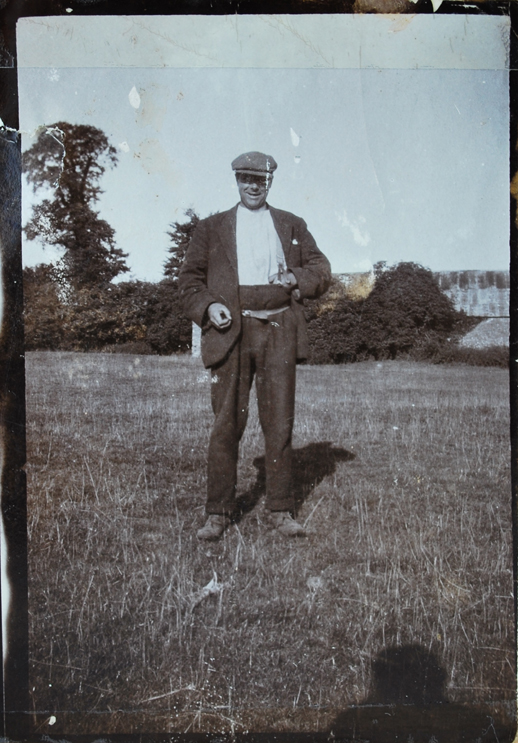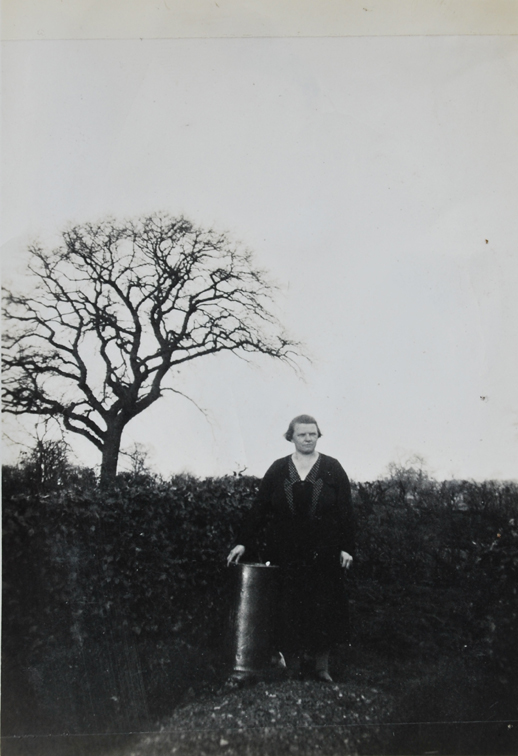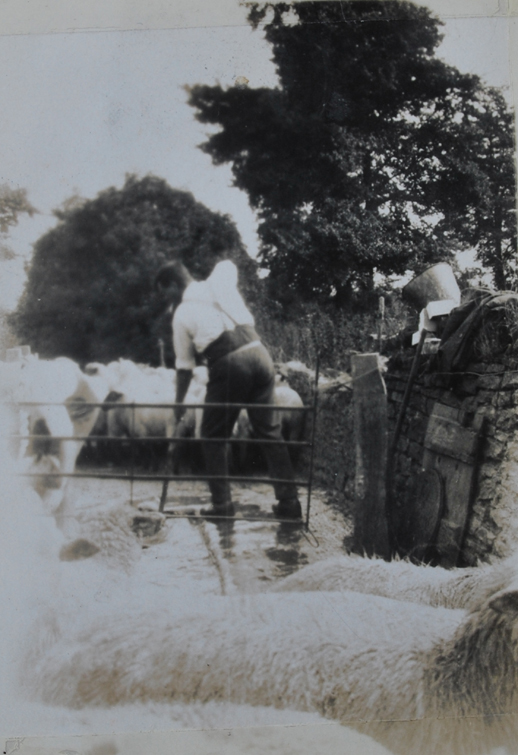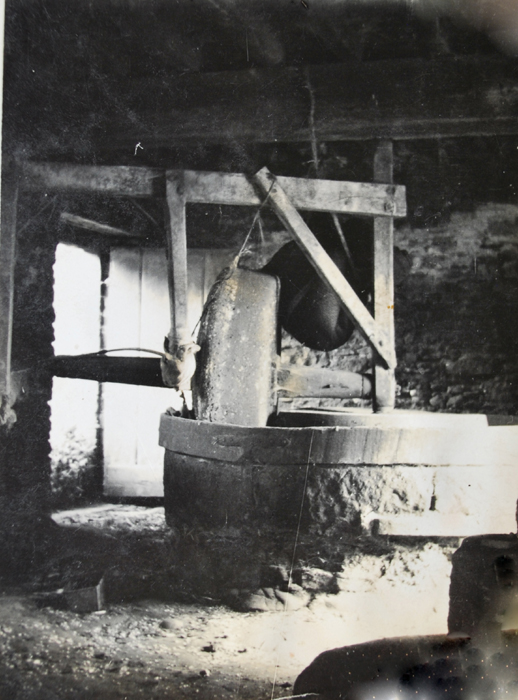Shadows in the Hay: A testament of voices
By Colin Williams
What appeared to be a seasonal stream, a winterbourne, trundled along beside me, bordering my route to the left. On the right, a hedgerow of hawthorn and beech, gaping in places and unmaintained was hiding noisy chorus lines of partridge while ahead of me, birds poured in and out of the black winter branches.
I was in the unfamiliar fields of the far south of Herefordshire but these fields were a home of sorts – a home to the blood of my ancestors. I come from storytelling stock and it was their tales that had called me to this placid landscape, stories of a home and people in the small creases of a place. I was carefully treading the tale of who they were and, moreover, who I was. Silently I counted out four steps, one for every generation of my family that had passed this way before me. I counted out one more for me.
I was here because almost one hundred years ago, a photograph had been taken on the farm whose roof I could now see appearing above the trees. It was from that image of a man standing in a meadow in the velvet hour of a late summer dusk that enquiring eyes had looked out at me and said ‘Come on then. Are you coming or not?’
That picture, creased and spotted, had been found amongst ragged boxes of pictures brought together so that history could be neatly reorganised. As I reached inside and picked up ill-treated albums and stacks of pictures stuffed into envelopes, the photographs began to spill out along with their stories. Operating at the junction between myth and reality some had begun to form an eloquent narrative. By the time I had sorted and resorted the photographs I had in front of me an intriguing tale, as good as any that my relatives had told me. Almost all of them had been taken on the farm I was walking towards name. Its name, in the porous Welsh of the region, means Wolf Point.
Photographs of people in the landscape, at work upon the land from which their bread was taken, nestled alongside strange, inscrutable tableaux. Gothic compositions that could have come straight from a Grant Wood painting or the cryptic and uncomfortable histories of Andrew Wyeth, jostled with images of images of work that had a quality at once dynamic and timeless.
In the period from just after the First World War until the early sixties anonymous photographers moved across the hundred or so acres of Wolf Point capturing a group of people sworn to a place. Stripped of photographic professionalism or the formal pose, the images were a hymn to the ordinary rhythms of lives lived according to the beat of the seasons and no other.
But as I looked at the pictures and walked through the fields in which they were taken they became much more than simple history. They began to be totemic of my own changing and complex relationships with nature and the landscapes that surrounded me. Above all they were a testament of voices; an affirmation of a slowly-built intimacy with place and the otherness of the natural world. One family. One place. What started as a passing curiosity became a personal and poignant journey deep into our relationship with the places we call home.
I felt like a pilgrim here: Expected but, nonetheless, just a visitor. Around me the migratory birds of the British winter had arrived on their pilgrimage, too. They had come bringing messages from Ultima Thule – the mythical and unreachable land that lay in the dark north of the mediaeval imagination – that the world was still turning. So much of their journey was unseen. I had prided myself on spotting their arrival and noting their departure but within the lines of their restive passages of movement there is the white noise of their journey, filled with a million wing beats that we do not see or hear. Neither do we fully comprehend the mechanics of their journey. We do not see the pulsing, shimmering parallel streamers of the earth’s magnetic field as they do. Nor can we know the sensation of imperceptible contractions of muscle and sinew that twist and curve their feathers in flight.
But revealed in the photographs was the muscle memory and physical intelligence of lives bound to every lift and line of their landscape; memories and senses tuned to every day of the year and not just the arrival of the harvest or the departure of the summer. I was learning lessons from the people in the photographs. These were people who – in the very deepest sense – knew where they lived, the threads that bound them to nature strong and visceral. Necessity once made those wires sing and daily interactions kept them taut and clean. Now, for many, they rust and sag.
As I walked it was as if another picture – taken on the very edges of memory and consciousness – helped frame a world of my own journeys in nature; journeys that had now come to settle in just these few acres.
When my pilgrimage was over and as I walked away from Wolf Point – it had long since fallen out of my family’s ownership – I recalled the photograph of the cider mill. Light spills into the photograph from the nettle-clogged door and shows the circular scrapes in the floor show where an animal had once hauled the mill round. The debris on the floor testifies that it hasn’t been used for many seasons past. But this was once a place where the essence of every autumn was extracted, where humans and the ‘green fuse’ of nature met. It carries an almost unbearable stillness, a crushing silence. It is clear that the space was once filled with activity, voices, laughter and industry. The picture reminded me of the abandoned whaling stations I’d seen in the Arctic Circle which looked as if life had stopped just a few moments before the picture was taken.
Bursting from a hawthorn, the urgent flight of a flock of winter thrush, redwing, punctured my thoughts. The birds shot in front of me and, swinging sharply around, flew over my head. As I turned to watch them pour up into another tree, I caught sight of the slate roof of Wolf Point over the hedgerows. I walked on but then looked back again, and again, and then once more.
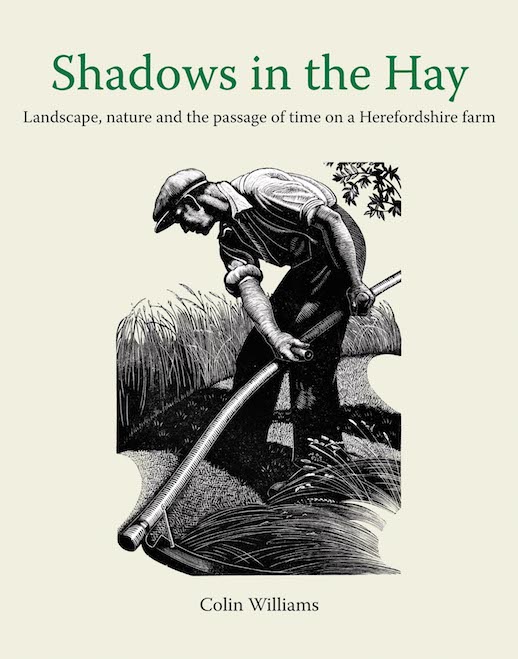
Shadows in the Hay: Landscape, nature and the passage of time on a Herefordshire farm, Logaston Press, Hardback, 144 pages, with 40 black and white photos. On sale from the publisher, priced £12.95
